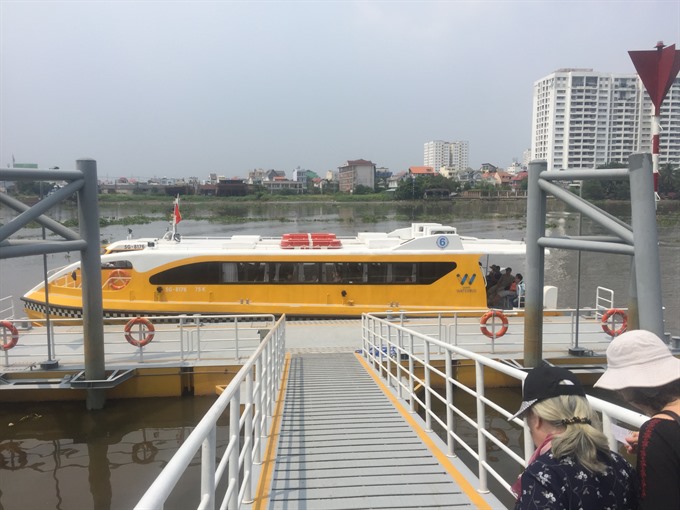 Society
Society

The city’s water buses provided services to about 900,000 passengers in the first 11 months of the year, up by 155 per cent compared with the same period last year, according to the HCM City Department of Transport.
 |
| Water buses on the Sài Gòn River in HCM City. — VNS File Photo |
HCM CITY — The city’s water buses provided services to about 900,000 passengers in the first 11 months of the year, up by 155 per cent compared with the same period last year, according to the HCM City Department of Transport.
Trần Quang Lâm, deputy director of the department, said in the first 10 months of the year, the water bus Route No 1 provided services to 276,000 passengers, or about 780 passengers per day.
The number of services provided by the water buses on Route No 1 rose from 18 in the first and second quarters to 26 in the third and fourth quarters.
The time periods from 8:30am-11am and 3pm-5pm saw the most passengers.
Under the city water bus plan approved in 2015, the water bus Route No 1, which is 10.8km long, runs through nine wharves from Bạch Đằng Wharf on Sài Gòn River in District 1, through Thanh Đa Canal to the Sài Gòn River in Bình Thạnh District, to the wharf in Linh Trung Ward in Thủ Đức District.
Wharves include Bạch Đằng in District 1, Bình An in District 2, Thanh Đa in Bình Thạnh District, and Hiệp Bình Chánh and Linh Đông in Thủ Đức District.
Another four wharves, Sài Gòn Pearl, Tầm Vu, Thảo Điền and Bình Triệu, are under construction and will open in 2019.
Four water buses, which can carry 75 passengers each, operate, with another bus expected to be added next year, according to Lâm.
Along with connections between water buses and road networks, city buses have been set up to carry passengers to Bạch Đằng, Bình An, Thanh Đa and Hiệp Bình Chánh, while another bus stop has opened 800 metres from Linh Đông Wharf.
The Centre for Public Transport Management under the HCM City Department of Transport also uses mini-buses to carry passengers to Linh Đông Wharf.
Thương Nhật Co., the investor of Water Bus Route No 1, has unveiled a plan to use electric cars to carry passengers from Bạch Đằng Wharf to hotels and shopping centres in downtown HCM City.
“Water bus services operate not only in the city but around the country. This means of transportation will contribute to the development of the city’s public passenger transportation and waterway tourism,” Lâm said.
To improve water tourism, the city’s transport department will dredge narrow passages of rivers and canals, check urban development in areas along Sài Gòn River, announce technical criteria for construction of inland waterway ports, and make plans to mobilise investments from the private sector for waterway passenger transport.
In the near future, the city’s transportation department will combine waterway passenger transport services with waterway tourism.
The routes will include a 15km waterway route that links Bạch Đằng Wharf-Sài Gòn River-Rạch Chiếc-Đồng Nai River; the 16km Sài Gòn River-Tẻ Canal-Đôi Canal; the 14km Sài Gòn River-Mũi Đèn Đỏ-Nhà Bè River; the 17km Sài Gòn River-Vàm Thuật River-An Lộc Bridge; and the 23km Sài Gòn River-Tẻ Canal-Ông Lớm Canal-Rạch Đìa-Phú Xuân River-Soài Rạp River.
The 32km route from Bạch Đằng in HCM City to Thủ Dầu Một in Bình Dương Province is expected to open before April 30, while the Bạch Đằng-Côn Đảo Island in Bà Rịa-Vũng Tàu Province is scheduled to start in March. — VNS




